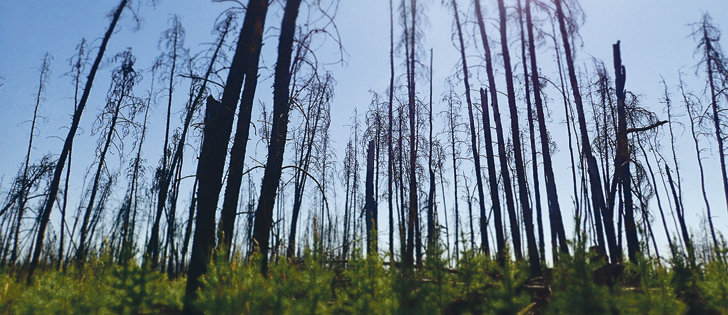FORT MCMURRAY, Alta. — When the residents of Fort McMurray fled the ravages of a wildfire last spring, they didn’t know that re-entering their burned city would be even more difficult.
Jordan Redshaw, communications manager for the regional municipality of Wood Buffalo, found that to be true. He was on the emergency response team and is now on the recovery task force.
With 2,579 dwellings lost to fire and an estimated economic impact of $9.5 billion, the fire dubbed “The Beast” took an enormous toll on the residents, city infrastructure and industrial activity in the heart of Canada’s energy sector.
Read Also

Bunge’s crop mix is changing
Bunge has predominantly been a soybean processing firm, but that’s about to change after the merger with Viterra with softseed processing and grain merchandising gaining ground.
“It’s really easy, by all things in comparison, to turn the switch off to a city. Getting everyone out by far was the easiest part of this. Getting everything back in is a whole different story,” said Redshaw.
A state of local emergency was declared in the region on May 1, 2016, and residents were evacuated in days that followed.
The battle against the fire lasted through mid-May but the phased-in return for residents didn’t begin until June 1.
In that interim, municipal, commercial and retail operations were at a standstill. Everything had to be brought back on line before residents could return in safety.
As an example, grocery stores abandoned during the emergency and without electricity for weeks had to be cleaned, sanitized and restocked.
“You’re basically removing a giant science experiment all at once,” said Redshaw about that particular aspect. It was only part of the challenge.
“Bringing all those back on line was a monumental effort by an incredible number of people that really worked towards it. It was truly fantastic to see.
“The last thing we wanted to do was to have 80,000 or 90,000 people coming back up the highway all at once and having a bunch of them find out that as they got back they, A, didn’t have a home, or B, didn’t have the ability to provide themselves with food, water and the necessary things that you need to get through their day.”
The phased re-entry aided in that process but because of safety issues, about 450 residents in the hardest hit areas of Abisand, Beacon Hill and Waterways weren’t allowed to return until the end of August last year.
“You can imagine the frustration,” said Redshaw.
Other residents who lost their homes were gradually allowed in to sift through the ashes, which is part of the grieving process after such a catastrophic event. They found that the fire had been so hot that fireproof safes and ceramics were gone.
“It burned everything that could possibly burn,” leaving only concrete and metal.
Inequality of the damage proved hard for some. A home left standing might be surrounded by utter devastation.
Redshaw said mental health services dealt with 26,000 requests for help last year, compared to the annual average of 6,000.
Today in Fort McMurray, there is little physical evidence of the fire, although the city is surrounded by the blackened snags of the forest that once enclosed it.
Fire-ravaged buildings were demolished last fall and foundations filled in.
Mother Nature has begun repair work, with ground level greenery and tree regrowth. Some trees are already more than six feet tall, aided by plentiful moisture last summer and fall.
Redshaw said about 600 foundations have been poured and about 350 houses framed. Some residents were in new homes by Sept. 1.
In its best boom years, Fort McMurray saw 600 to 700 units built annually, so 600 new ones in the first five months of 2017, less than a year after residents were able to return, is considered positive.
Not everyone has returned to the fire-ravaged community, however. Before the fire, there were about 82,000 people and now Redshaw said the best estimate is 73,000 to 75,000.
Some of that decrease is due to the bust in the oil boom and it’s impossible to estimate how much is attributable to the fire of 2016.
As recovery continues, the municipality has had to change some of its bylaws to accommodate construction of buildings unlike those that previously stood. For example, some duplex owners don’t want to rebuild in that format, said Redshaw.
The municipality has also bought 21 lots where houses once stood because the sites are not deemed suitable in terms of future fire safety and ground stability. It is considering buying another 14 similar sites.
Redshaw said some residents’ attitudes about rebuilding have been surprising. The municipality wants to establish a wider firebreak between forest and buildings.
“We’ve had a lot of pushback from residents as to what we’re doing with that space. The resistance and the pushback was actually quite fascinating from a psychology perspective, knowing that we just escaped a big fire, yet you want trees closer to your home.”
Though the municipality is making an effort to become more fire smart, insurance companies are unwilling to cover any additional costs that might entail, said Redshaw.
Despite those sorts of challenges, getting residents and the community back on track is a major thrust.
“You come to Fort McMurray for a reason and you stay for a reason. You’re not here because you just want to hang out or you’re stuck here,” said Redshaw.
Residents in the young community powered by oilsands activity have a median income of $186,000 and the average cost of a home is $600,000.
Typical of boomtowns, residents come from all over the world to work here, and in Fort McMurray more than 80 languages are spoken.
That diversity lends itself to a strong sense of community, Redshaw said, and will allow the city to rise from the ashes.
















